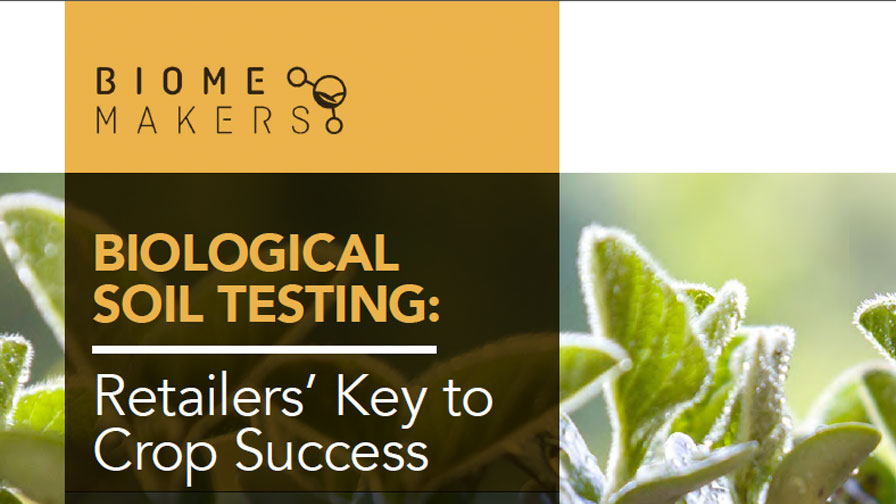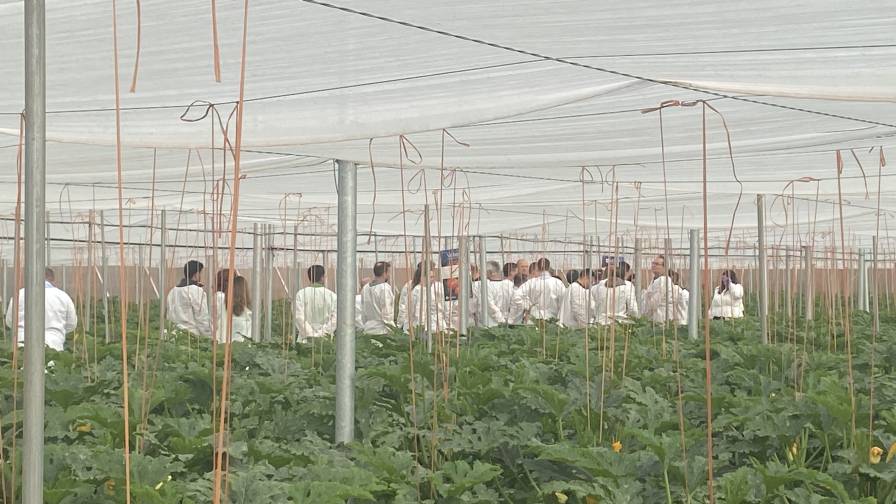The Biostimulants Gold Rush: What’s Driving Demand in the Plant Health Market?
The way companies approach biologicals products in general, and biostimulants in particular, seems reminiscent of the way people approached California in the mid-19th century when gold was discovered around Sutter’s Mill, in Coloma, CA.
In 1848, there were 4,000 miners. A year later, that figure jumped to 80,000 and by 1855 more than 300,000 made their way to the region.
As interest in biostimulants has grown, companies from around the world have invaded the space hoping to make their fortune. And like the gold rush, most won’t, and eventually a shakeout will leave top players, those willing to invest in science, marketing, and education that lead to effective solutions will become the leaders.
“The biologicals market has proven to be ever-changing, and right now it’s growing at a rapid pace and becoming very crowded,” says Jeff Carr, Biologicals Marketing Manager, WinField United. “New products are consistently entering the market and external factors like consumer preferences and chemical resistance are driving more demand.”
Market Conditions
“North America’s seaweed extracts biostimulant market is expected to reach $546.86 million by 2030, growing at the CAGR (compound annual growth rate) of 12% in the forecast period of 2023 to 2030,” says James Maude, Senior Vice President, Acadian Plant Health. “North America’s seaweed extracts biostimulant market comprises the countries U.S., Canada, and Mexico. Of these three Mexico leads in the adoption of biostimulants due to its high concentration of high value specialty crops. In the U.S. and Canada, the market is expanding from traditional use in specialty crops to broadacre crops where larger gains in soil health can be made.”
Brian Haschemeyer, Vice President, BRANDT Discover & Innovation, agrees the U.S. market continues to grow, but offers a cautionary note: “There is still uncertainty in the regulatory pathway. I believe it has been clear for a while that products deemed plant regulators are subject to regulation under the Federal Insecticide, Fungicide and Rodenticide Act (FIFRA) as pesticides. Biostimulants, from a regulatory definition, are instead going to be focused on products that positively impart nutrient use efficiency and abiotic stress relief, although there is still some uncertainty about marketing claims and testing.”
The bipartisan Plant Biostimulant Act of 2023 will hopefully lead to clarity on how plant biostimulants will be regulated in the US.
“Biostimulants represent a promising tool in the pursuit of regenerative and climate-smart agriculture,” says Acadian’s Maude. “As the world grapples with the challenges posed by climate change, integrating these substances into farming practices can contribute to sustainable food production, repairing biodiversity, environmental conservation, and the resilience of agricultural systems.”
It’s little wonder, then, that so many companies have moved into the biological space. “The North America biostimulant market is dominated by humates, amino acids, and seaweed extracts.,” says Johan Coetzee, Head of North America at Rovensa Next. “Many organizations are investing heavily in biological products and this investment is expected to grow significantly in the future. Other interesting new developments include novel super-low-rate products that improve crop health and yield quality using as little as 1.36 ounces/acre.
Promoting Sustainability
One reason biostimulants have been enjoying such popularity is their sustainable aspect.
“Biostimulants can provide eco-friendly alternatives to farming practices thanks to reduced dependence on chemical fertilizers, resulting in a decrease in CO2 emissions and the creation of a healthier environmental ecosystem,” says Pedro Juan, Head of Food Chain Management, Certis Belchim BV. “The improvement of crop productivity and quality is also a critical factor to support the food safety link to sustainability.”
It is clear that through their actions, biostimulants can improve crop vigor, making them less susceptible to pests or diseases and thereby reducing the use of plant protection and the Environmental Impact Quotient.
It’s not just learning how a given biostimulant works on a given crop, it’s important to understand how these products interact with other biological offerings and other crop inputs.
“The biostimulants market in North America is growing, driven by increasing awareness of sustainable agriculture practices,” says Dr. Alberto Acedo, Co-Founder and Chief Scientific Officer, at Biome Makers.
According to Acedo, factors influencing the market include:
- Regulatory support: Favorable regulations and government initiatives supporting sustainable farming practices like the Plant Biostimulant Act of 2022.
- Adoption in mainstream agriculture: Biostimulants are gaining acceptance among conventional farmers.
- Innovation and research: Ongoing R&D efforts expand the range of available biostimulant products.
Providing Support
While the modern era of biostimulants has been around for years (decades), now, many growers have yet to fully understand how they work and how they should be applied. That’s an area where both manufacturers and retailers can help.
Biome Makers’ Acedo puts it simply: “Manufacturers and retailers play a key role in promoting biostimulants through education, product accessibility, and collaborations with farmers.”
WinField United’s Carr agrees adding additional ways they can help.
“Manufacturers have an obligation to provide growers with products that have a known mode of action along with reliable data to back up performance claims,” he says. “This helps retailers effectively position these products for success. In the end, promoting a biostimulant should be done when it makes good business sense for both the retailer and the grower.”
In sentiment reminiscent of Pres-ident Ronald Reagan’s approach to the Soviet nuclear program, so too retailers must evaluate products carefully.
“We take a trust but verify approach to these products,” says Greg Smith, Director of Brand Innovation and Development, Helena Products Group. “Before (we) move forward with selling a product, we will do two to three years of R&D work, which consists of third party replicated trials. That’s how we know what the product can do and where it fits into a growers’ program.”
In addition, growers want to know not just that biostimulants work, but also how they work. Certis Belchim’s Juan, explains another important factor for biostimulant acceptance.
“Independent trial results and evidence are vital in supporting the future of biostimulants and the biostimulants companies need to invest in field trials by reputable scientists and researchers to collect robust data,” he says. “Identification of the mode of action is another clear indicator in biostimulants and should be laboratory-tested and used alongside field data to convince growers and demonstrate the real benefits of using a particular biostimulant.”
Opportunities, Challenges
As often happens when exploring the rapidly growing and shifting segments, it can be difficult to distinguish the opportunities from the challenges.
“The biggest market segment is still non-users,” says Arne Pingel Head of Global Strategic Marketing at Rovensa Next. Pingel is also President of European Biostimulants Industry Council. “This means that the best opportunities lie in increasing understanding of how biostimulants work and teaching growers how they can be used to increase their ROI. Additionally, there are exciting innovations in development that will increase their appeal even more and encourage growers to try out biostimulants thus mainstreaming them.
“The challenges are similar,” Pingel says. “Although the effect of biocontrol products is mostly visible immediately, biostimulants have a positive impact that is measurable in terms of yields, which often occurs months after application. We still need to refine the reasons why biostimulants deliver added value to increase the uptake of these products.”
While some challenges exist, manufacturers and distributors remain bullish on the products, some smaller companies could find themselves quickly looking for a new line of work.
Because of their ability to support many elements of the supply chain, WinFied United’s Carr offers one word that encompasses the role biostimulants play in the market: Synergy.
“Manufacturers have an obligation to provide growers with products that have a known mode of action along with reliable data to back up performance claims,” Carr says. “This helps retailers effectively position these products for success. In the end, promoting a biostimulant should be done when it makes good business sense for both the retailer and the grower.”







